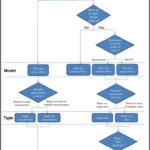Per capita, meaning “per person,” is a crucial tool for comparing populations across various metrics. By dividing a specific measure by the population size, per capita figures provide a standardized way to analyze data and understand how individuals within different groups fare. This article explores the applications and limitations of using per capita for population comparisons.
:max_bytes(150000):strip_icc()/TermDefinitions_percapita-6423df75f9ae4ee686655ea87cd465c6.jpg)
Understanding Per Capita Comparisons
Per capita comparisons are widely used in economics to analyze various indicators like Gross Domestic Product (GDP), income, and healthcare spending. For instance, GDP per capita, calculated by dividing a country’s GDP by its population, reflects the average economic output per person. This metric allows for meaningful comparisons between countries with vastly different population sizes, offering insights into the relative economic well-being of their citizens. Similarly, income per capita represents the average income earned per person in a specific region or country.
Advantages of Per Capita Analysis
Using per capita figures offers several advantages when comparing populations:
- Standardization: Per capita normalizes data, making it possible to compare groups of different sizes fairly. Without per capita adjustments, larger populations would inherently have higher aggregate figures, obscuring the true picture of individual experiences.
- Granular Insights: Per capita data delves deeper than aggregate numbers, revealing how resources or characteristics are distributed among individuals within a population. This granular perspective allows for more nuanced comparisons.
- Identifying Disparities: Per capita comparisons can highlight disparities between populations in areas like income, healthcare access, and education levels. These insights can inform policy decisions and resource allocation strategies aimed at reducing inequalities.
Limitations of Per Capita Comparisons
While per capita is a powerful tool, it has limitations:
- Ignoring Distribution: Per capita figures represent averages and do not reflect the actual distribution within a population. Income inequality, for example, can be masked by a seemingly high income per capita. Two countries with the same GDP per capita might have vastly different income distributions, with one exhibiting greater equality than the other.
- Oversimplification: Reducing complex social phenomena to a single per capita figure can oversimplify the reality. Other factors, such as cultural differences, social structures, and environmental conditions, also play significant roles in shaping population outcomes.
- Outliers: Extreme values or outliers can skew per capita calculations, potentially misrepresenting the typical experience within a population. A small number of extremely wealthy individuals, for instance, can inflate the per capita income, making it appear higher than the majority of the population actually earns.
:max_bytes(150000):strip_icc():format(webp)/dotdash_Final_Median_vs_Average_Whats_the_Difference_and_Which_Should_You_Use_Feb_2020-01-6f376c80784046399f3342852c9a2222.jpg)
Per Capita vs. Median: A Complementary Approach
To mitigate the limitations of per capita, using the median in conjunction can provide a more comprehensive understanding. The median represents the middle value in a dataset, less susceptible to outliers. For example, median income offers a clearer picture of the typical income level in a population than per capita income, as it is not influenced by extreme high or low incomes.
Conclusion
Per capita is a valuable tool for comparing populations across a range of metrics. By providing standardized figures, it facilitates meaningful comparisons between groups of different sizes. However, it’s crucial to acknowledge its limitations, particularly its inability to capture distribution and susceptibility to outliers. Combining per capita analysis with other measures, such as the median, provides a more robust and nuanced understanding of population differences. While per capita data provides valuable insights into average values, considering the distribution and other contextual factors is essential for a comprehensive analysis.
